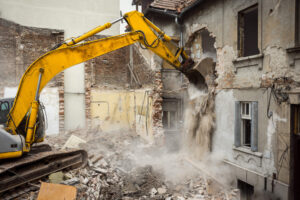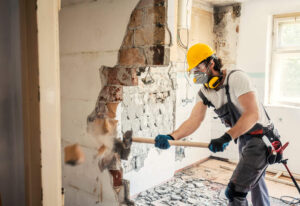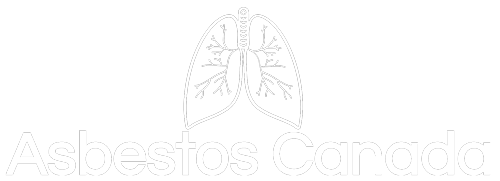Can Asbestos Be Fully Removed from a Building?
Methods of Asbestos Removal
 Asbestos removal is a complex process that must follow strict regulations and guidelines. Professional asbestos abatement contractors are often hired to handle the task. The process typically includes:
Asbestos removal is a complex process that must follow strict regulations and guidelines. Professional asbestos abatement contractors are often hired to handle the task. The process typically includes:
- Inspection and Assessment. Asbestos-containing materials are identified and the extent of contamination is assessed.
- Containment. The affected area is sealed off to prevent the spread of asbestos fibers.
- Removal. Asbestos materials are carefully removed, using specialized tools and protective gear.
- Disposal. Asbestos waste is sealed in specially designed containers and transported to a designated disposal site.
- Cleanup. The work area is thoroughly cleaned, and air quality is monitored to ensure safety.
While complete removal is the ideal goal, encapsulation and encasement are often used as interim solutions when complete removal is not feasible. Encapsulation involves applying a sealant or adhesive over asbestos-containing materials to prevent the release of fibers. Encasement involves covering the asbestos materials with a protective barrier. These methods can be effective in controlling asbestos exposure, but are not permanent solutions. A contractor doing work in your home who may unknowingly disturb the materials or a fire could lead to asbestos fibers being released.
The Challenges of Complete Asbestos Removal
- Invasive and Disruptive
Complete asbestos removal can be highly invasive and disruptive. It often necessitates the removal of walls, ceilings, and insulation, which can be costly and time consuming. Moreover, it can disrupt the occupants’ business operations within the building. However, it is the best way to ensure the safety of a home’s occupants for years to come.
- Cost
Asbestos removal is expensive, primarily due to the specialized equipment and trained personnel needed for the job. The cost can vary widely depending on the size and complexity of the project. Some property owners may find it financially challenging to undertake complete asbestos removal. A government program to financially assist homeowners and businesses with asbestos removal would be ideal, but there are no such programs to date.
- Accessibility
In some cases, asbestos-containing materials may be in hard-to-reach areas or areas with limited accessibility. This can make it difficult to ensure complete removal, increasing the risk of residual asbestos exposure.
- Environmental Concerns
Disposal of asbestos waste is tightly regulated by government to prevent environmental contamination. Proper disposal can be expensive, and it may be challenging to find disposal facilities that can handle asbestos safely.
- Potential Health Risks to Workers
The workers involved in asbestos removal are at a high risk of asbestos exposure. Despite strict safety protocols and protective gear, there is always a chance of accidental exposure during the removal process.
- Limited Guarantee
Even with the most meticulous removal process, it is difficult to guarantee 100% removal of asbestos. There may still be microscopic asbestos fibers left behind, which can pose health risks over time.
Solutions and Mitigation Strategies

While complete asbestos removal is the most effective approach, property owners and contractors often need to consider various factors when deciding how to address asbestos in a building. Here are some solutions and mitigation strategies:
- Risk Assessment. Conduct a comprehensive risk assessment to determine the extent of asbestos contamination and the potential health risks. This assessment can help in making informed decisions about whether complete removal is necessary or if encapsulation or encasement can effectively manage the risk.
- Proper Asbestos Management Plans. Develop and implement asbestos management plans that outline a proactive approach to monitoring and addressing asbestos-containing materials. These plans can include regular inspections, maintenance, and a clear protocol for addressing any issues.
- Safe Encapsulation and Encasement. When encapsulation or encasement is chosen as an interim solution, it is essential to ensure that these methods are carried out following the best practices and with high-quality materials to effectively contain asbestos fibers.
- Legal Compliance. Comply with federal and provincial regulations related to asbestos removal and disposal. These regulations are in place to protect public health and the environment.
- Expert Consultation. Seek advice and guidance from asbestos removal experts and consultants who can assess the specific needs of your building and provide the best recommendations.
The complete removal of asbestos from a building is the most effective way to eliminate the health risks associated with asbestos exposure. However, this process is not without its challenges. It can be invasive, expensive, and may not be entirely foolproof. In cases where complete removal is not feasible, encapsulation and encasement can provide temporary solutions to manage the risk. It is crucial for property owners to work with qualified asbestos abatement professionals and follow stringent regulations to ensure the safety of both occupants and workers.
If you have questions about the legal aspects of asbestos removal, you should call Asbestos Canada. We are trustworthy Canadian mesothelioma lawyers that put your needs first. Contact Asbestos Canada today to learn more.
